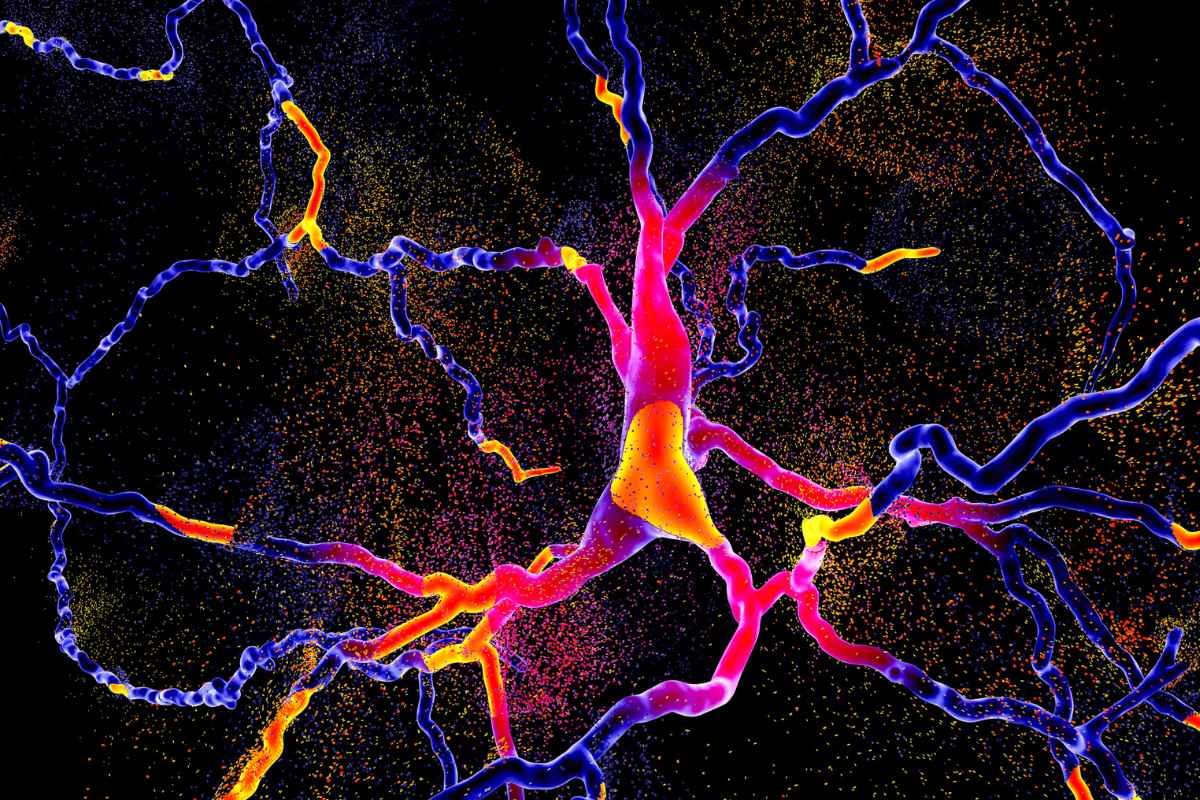By: Design for Change
Categories:
Dopamine and Drug Use: How Are They Related?
You are here:Dopamine and drug use are related in more ways than you may realize. Dopamine is generally referred to as the “feel good” chemical or the “pleasure chemical.” Drug use and addictions are linked to dopamine, but what is the connection? How does dopamine influence a person’s behavior in this manner?
Addiction specialists are still researching to understand exactly how dopamine relates to substance use. However, the role of dopamine in addiction is complex and still not fully understood. With this in mind, let’s look at some of the things we do know about the connection between dopamine and drug use:
What Is Dopamine?
What is dopamine? Dopamine is a neurotransmitter and a hormone. It carries messages between nerve cells in the brain and between the brain and the body. Dopamine interacts with the reward and pleasure centers of the brain along with other chemicals. This combination of chemicals determines our mood and affects memory, focus, and movement.
As one of the most prominent influences on human behavior, dopamine motivates people to repeat pleasurable actions. Reward and reinforcement play a role in how we create patterns of behavior and habits.
Everyone has different levels of naturally occurring dopamine. The varying levels result in a range of physical and mental effects that can be positive or negative.
Examples of How High or Low Dopamine Affect You
Effects of High Dopamine
People with healthy levels of dopamine are motivated, attentive, creative, excited about life, and highly productive. These individuals also have empathy for others and work well with others.
On the other hand, some people with high dopamine are aggressive, competitive, and have poor impulse control.
The negative effects of high dopamine can lead to disorders such as ADHD, gambling, cocaine and other drug use, and other behavior or mental issues.
Effects of Low Dopamine
Several factors cause low dopamine in the brain. Certain health conditions or brain injuries can affect dopamine. Further causes include substance misuse or inappropriate use and illnesses such as Parkinson’s disease.
Low dopamine, or dopamine deficiency, can cause a person to feel restless, fatigued, depressed, anxious, and unmotivated. People with low dopamine levels also experience sleep disturbances, brain fog, and an inability to focus on tasks.
Some people with low dopamine may struggle with weight changes, reduced sex drive, anxiety, and chronic pain. Others struggle with depression, psychosis, or schizophrenia. Basically, low dopamine affects a person’s ability to feel pleasure.
Connection Between Dopamine and Drug Use
The causes of addiction vary from one person to another. Factors such as environment, family history of drug use, mental disorders, and physical health play a role in substance use. Although dopamine reinforces pleasurable actions, it does not cause addiction. However, it does play a role in developing tolerance to a substance.
So, does dopamine cause addiction? No, it doesn’t. Here’s how it works. Consistent use of drugs or alcohol overstimulates the reward center of the brain. When this happens, more of the substance is needed to produce the desired effects.
How Can I Regulate Dopamine Naturally?
Rather than using drugs or alcohol, how can you regulate or increase dopamine levels? The healthiest way to increase dopamine is to do things that make you feel good. However, as a precaution, talk to your physician first. Your low dopamine may be the result of a disease that needs proper treatment.
In the long run, finding natural ways to boost dopamine is your best recourse. Here are some things you can do:
- Spend more time outdoors. Research shows that increased exposure to sunlight helps raise dopamine levels. For instance, people who live in climates that restrict outdoor activities are prone to Seasonal Affective Disorder (SAD), otherwise known as the “winter blues.” The disorder involves depression and low mood. So, find ways to increase your exposure to sunlight when you can.
- Eat nutritious foods. Tyrosine is an amino acid that aids in protein production in the body. Although the body naturally produces tyrosine, levels can vary depending on your diet. Tyrosine helps improve memory and has antidepressant effects. Foods high in tyrosine include eggs, cheese, meat, poultry, fish, soybeans, nuts, and sesame seeds.
- Listen to music. Music therapy helps increase dopamine levels by up to 9%. According to studies, listening to instrumental songs is particularly beneficial in raising dopamine levels.
- Get more exercise. With regular exercise, you will feel good about yourself, thereby increasing dopamine production.
- Additional tips. You can try massage, meditation, gardening, reading, and getting good-quality sleep. You need about seven to nine hours of sleep every night, according to the National Sleep Foundation.
Certain supplements are known to increase dopamine levels. For example, Tyrosine, L-Theanine, Omega-3 fatty acids, magnesium, and Vitamins D, B5, and B6 are easily obtained.
You Can Rely on Design for Change to Help You Quit Substance Misuse or inappropriate use
To stop substance use, you have to learn better ways of dealing with life’s challenges. You need to know why you use drugs or alcohol and learn effective skills for avoiding relapse. At Design for Change Recovery, we will help you gain the skills you need for living a substance-free lifestyle.
We offer a unique, full continuum of care that can be customized to fit your needs and preferences. Contact our Lancaster, CA facility today to learn more about our fully-accredited, evidence-based programs. In the long run, taking this step will be worthwhile for many reasons.
Sources:
healthline.com/ – Dopamine and Addiction: Separating Myths and Facts
ncbi.nlm.nih.gov/ – National Sleep Foundations Updated Sleep Duration Recommendations: Final Report


